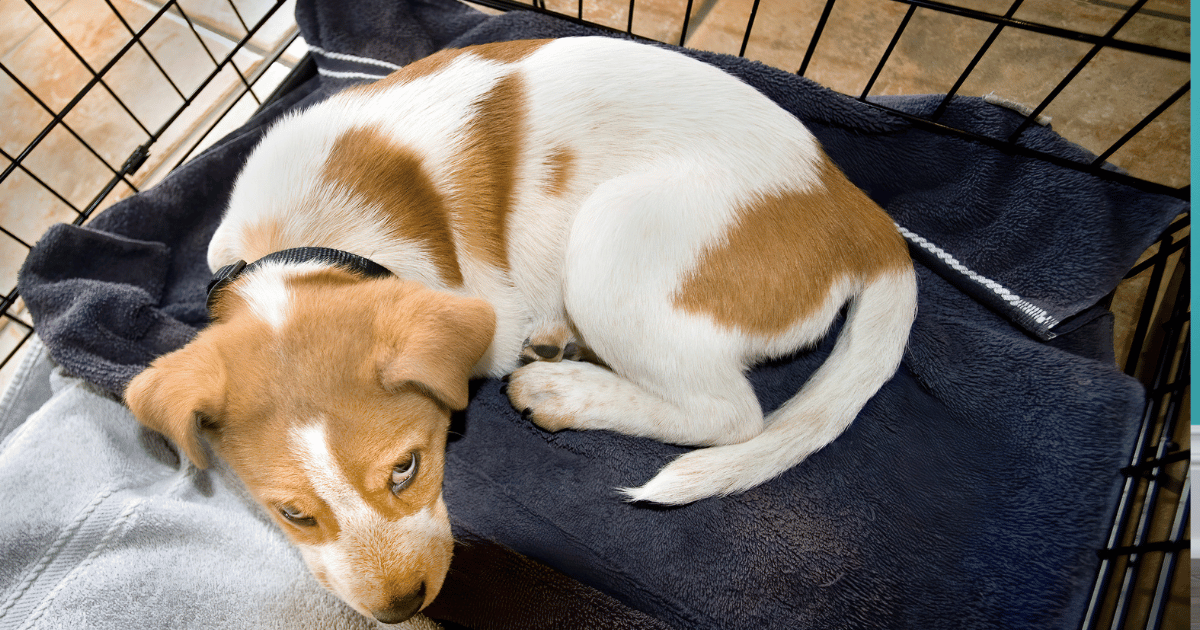Uncategorized
Crate Training Puppy Crying: A Guide for a Peaceful Transition
Crate training is a vital step in ensuring your puppy’s safety, comfort, and overall well-being. While the process has its challenges, it’s important to address the common concern of puppy crying during crate training. In this article, we’ll answer key questions about this topic and provide insights on how to make the process as smooth as possible for both you and your furry friend.
Is it OK to Let My Puppy Cry While Crate Training? It’s natural to feel concerned when your puppy cries during crate training. However, it’s essential to understand that some level of initial crying can be a part of the adjustment process. Your puppy is in a new environment, and the crate represents a change in their routine. While it’s tough to hear them cry, it’s generally okay if the crying is not excessive and distressing.
How Long is it OK to Let a Puppy Cry in Crate? The duration you allow your puppy to cry in the crate depends on various factors, including their age, temperament, and previous experiences with crates. Puppies have varying levels of adaptability. A key principle is to gradually extend the time your puppy spends in the crate. Start with short intervals and gradually increase them as they become more accustomed to the space.
Creating Positive Associations: To minimize crying, focus on creating positive associations with the crate. Make the crate a pleasant and inviting place by placing soft bedding, toys, and treats inside. Associate positive experiences with the crate, like feeding your puppy near it or placing their favorite toys inside. This helps your puppy view the crate as a safe and enjoyable space.
Using the ChimpyTrendy Approach: At ChimpyTrendy, we understand the importance of quality pet products that enhance your furry friend’s well-being. When it comes to crate training, our premium crates are designed for comfort and security. With sturdy construction and thoughtful design, our crates create a cozy environment that eases the transition for your puppy.
Will My Puppy Eventually Stop Crying in the Crate? The good news is, yes, most puppies will eventually stop crying in the crate as they become familiar with the routine. Consistency and patience are key. Gradually increase crate time while providing positive reinforcement. Avoid letting your puppy out of the crate while they’re actively crying, as this might teach them that crying leads to freedom.
H3: Tips for Minimizing Puppy Crying During Crate Training:
Establish a Routine: Dogs thrive on routine, so set a consistent schedule for meals, potty breaks, and crate time. Predictability helps reduce anxiety.
Exercise and Play: A tired puppy is less likely to be anxious. Engage in play and exercise sessions before crate time to help them burn off excess energy.
Quiet Departures and Arrivals: Keep arrivals and departures low-key. This reduces the association between your leaving and the crate, which can trigger anxiety.
Gradual Departures: Practice leaving your puppy alone for short periods, gradually increasing the time. This helps them learn that you’ll always return.
Calming Music or Blankets: Sometimes, soothing background noise or an item of your clothing can help comfort your puppy in the crate.
Ignoring Whining: While it’s tempting to console a crying puppy, avoid rewarding crying behavior with attention. Instead, reward quiet behavior with positive reinforcement.
Professional Guidance: If your puppy’s crying persists or intensifies, consider seeking advice from a professional dog trainer or veterinarian.
Conclusion: Crate training a puppy involves patience, consistency, and understanding. While it’s normal for puppies to cry during crate training, taking steps to create positive associations with the crate can significantly reduce anxiety. ChimpyTrendy‘s premium crates offer the perfect environment for your puppy’s comfort and security during this training phase. Remember that with time and dedication, your puppy will likely overcome their initial discomfort and learn to love their crate as their safe haven.


